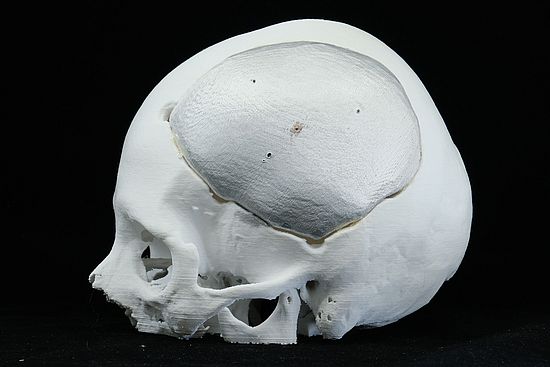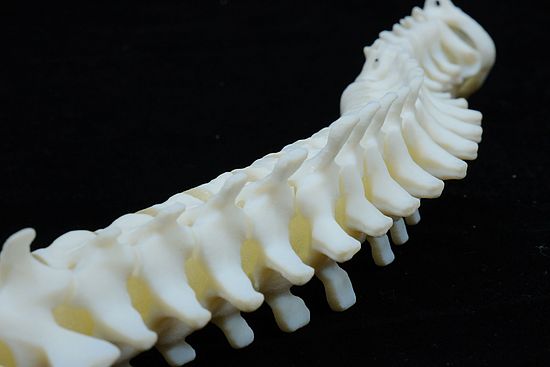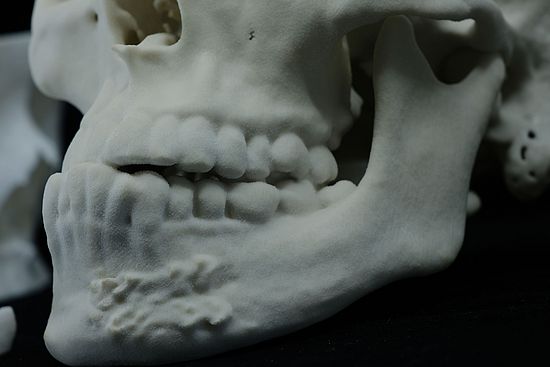Titanium Material Details

General Informations
The primary metal utilized in DLM (Direct Metal Laser) printing is titanium. This metal is strategically chosen for its exceptional properties and suitability for various industrial applications. The use of titanium in DLM metal printing is characterized by the following key features:
Biocompatibility:
Titanium is known for its biocompatibility, making it a preferred choice for medical applications. In DLM metal printing, titanium can be used to create biocompatible implants and medical devices that seamlessly integrate with the human body.
Strength-to-Weight Ratio:
Titanium possesses an outstanding strength-to-weight ratio, making it an ideal material for applications where lightweight yet robust components are essential. DLM printing with titanium allows for the fabrication of lightweight yet durable structures.
Corrosion Resistance:
Titanium exhibits remarkable resistance to corrosion, ensuring the longevity of components produced through DLM metal printing. This feature is especially advantageous in environments prone to corrosion or exposure to corrosive substances.
Precision and Complex Geometries:
DLM metal printing enables the creation of precise and complex geometries, and titanium's compatibility with this technology allows for the production of intricate components. This is particularly valuable in aerospace and engineering applications.
High Temperature Resistance:
Titanium's high melting point and ability to retain its mechanical properties at elevated temperatures make it suitable for applications in high-temperature environments. This includes aerospace components and parts for industrial processes.
Pinting in Titanium
Minimum Wall: 0.5 mm
Smalest Detail : 0.3
Layer hight : 0.1 mm
Max Print size: 200 x 200 x 200 mm
Tollerance: DIN ISO 2768-mk
Delivery Times: typicaly 10-12 Businessdays

Pro`s and Con`s
Pro:
- Biocompatibility:
- Titanium's biocompatibility is advantageous for medical applications, allowing for the creation of implants and medical devices that are well-tolerated by the human body.
- High Strength-to-Weight Ratio:
- Titanium's exceptional strength-to-weight ratio is beneficial for aerospace and engineering applications, enabling the production of lightweight yet robust components.
- Corrosion Resistance:
- Titanium's resistance to corrosion ensures the durability and longevity of components, making it suitable for applications in corrosive environments.
- High Temperature Resistance:
- Titanium's ability to withstand high temperatures makes it ideal for applications in aerospace, industrial processes, and other environments with elevated temperatures.
- Precision and Complex Geometries:
- DLM metal printing allows for the creation of precise and complex geometries, and titanium's compatibility with this technology enables the production of intricate components for various industries.
Con:
- Material Cost:
- Titanium is an expensive material compared to other metals, which can contribute to higher overall production costs when used in DLM metal printing.
- High Melting Point:
- The high melting point of titanium makes the printing process more energy-intensive and may require specialized equipment, potentially increasing the operational costs.
- Limited Material Variety:
- While titanium is a versatile material, the options for different alloys or compositions may be limited compared to other metals available for DLM metal printing.
- Post-Processing Challenges:
- Titanium components produced through DLM metal printing may require additional post-processing steps, and working with titanium can be challenging due to its hardness.
- Machine Limitations:
- Some DLM metal printers may have limitations in handling titanium due to its specific properties. This can restrict the accessibility of DLM metal printing with titanium for certain applications
Applications of Titanium 3D Printing



- Applications of Titanium in DLM Metal Printing:
Medical Implants:
- Titanium's biocompatibility makes it an ideal material for producing medical implants such as orthopedic implants, dental implants, and prosthetics. DLM metal printing allows for the creation of customized and intricate implant designs tailored to individual patient needs.
Aerospace Components:
- Titanium's high strength-to-weight ratio and resistance to corrosion make it a preferred choice for aerospace applications. In DLM metal printing, titanium is used to manufacture lightweight yet durable components for aircraft, spacecraft, and satellite structures.
Industrial Tooling and Equipment:
- Titanium components produced through DLM metal printing find applications in industrial tooling and equipment. The material's strength and resistance to high temperatures make it suitable for manufacturing tools, dies, and components used in various industrial processes.
High-Performance Automotive Parts:
- Titanium is utilized in DLM metal printing to create high-performance automotive parts. The material's lightweight nature, combined with its strength and durability, contributes to the production of components such as engine components, exhaust systems, and suspension parts.
Oil and Gas Exploration Equipment:
- Titanium's corrosion resistance and ability to withstand harsh environments make it valuable in the oil and gas industry. Components produced through DLM metal printing, such as valves and fittings, are used in exploration and extraction equipment where resistance to corrosion is crucial.
Technical specifications
General Properties
| Propertie | Test Method | Value |
| Density | ISO 1183, GB/T 1033 | 4.51 g/cm³ at 20°C |
| Melting Point | N/A | |
| Flame Resistance | Non-flammable |
Mechanical Properties
| Property | Test Method | Value |
| Elastic Modulus (X-Y) | ISO 527, GB/T 1040 | 114 GPa |
| Elastic Modulus (Z) | ISO 527, GB/T 1040 | 114 GPa |
| Tensile Strength (X-Y) | ISO 527, GB/T 1040 | 970 MPa |
| Tensile Strength (Z) | ISO 527, GB/T 1040 | 970 MPa |
| Elongation at Break | ISO 527, GB/T 1040 | 14% |
| Flexural Modulus | | ISO 178, GB/T 9341 | 110 GPa |
| Flexural Strength | ISO 178, GB/T 9341 | 1,000 MPa |
| Impact Toughness (Charpy X-Y) | ISO 179, GB/T 1043 | 45 J/m² |
Thermal Properties
| Property | Test Method | Value |
| Melting Temperature | DSC, 10°C/min | 1,668°C |
| Heat Deflection Temperature (1.8MPa) | ISO 75 | 1,300°C |
| Heat Deflection Temperature (0.45MPa) | ISO 75 | 1,400°C |



